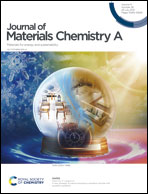Building next-generation supercapacitors with battery type Ni(OH)2
Abstract
Electrochemical energy-storage technologies remain the only key to solve the increasing demands of global energy supply, zero-emission transportation, and grid storage in a greener way. Accordingly, novel strategies and the new promising designs of electrodes attempt to conquer the high energy density of supercapacitors without decreasing their power density and cycle life. In supercapacitors, asymmetric supercapacitors outshine the symmetric supercapacitors (<1.2 V) via the benefit of great energy density through high operating voltage (>2.0 V) in a safer way using aqueous electrolytes. Especially, emerging high energy supercapacitors perfected by suitable low cost-electrode materials are now the crown of energy storage research. Employing battery type Ni(OH)2 as a positive electrode has become a promising approach to building next-generation high energy supercapacitors besides its abundance, cost efficiency, environment friendliness, and high theoretical capacity. This review exclusively elaborates the unnoticed vision into the design, fabrication, mechanism, and investigation of such fascinating Ni(OH)2 based supercapacitors in an asymmetric fashion. Further, this review eventually mitigates the issues associated with the Ni(OH)2 component toward the goal of building next-generation supercapacitors for a sustainable environment.



 Please wait while we load your content...
Please wait while we load your content...